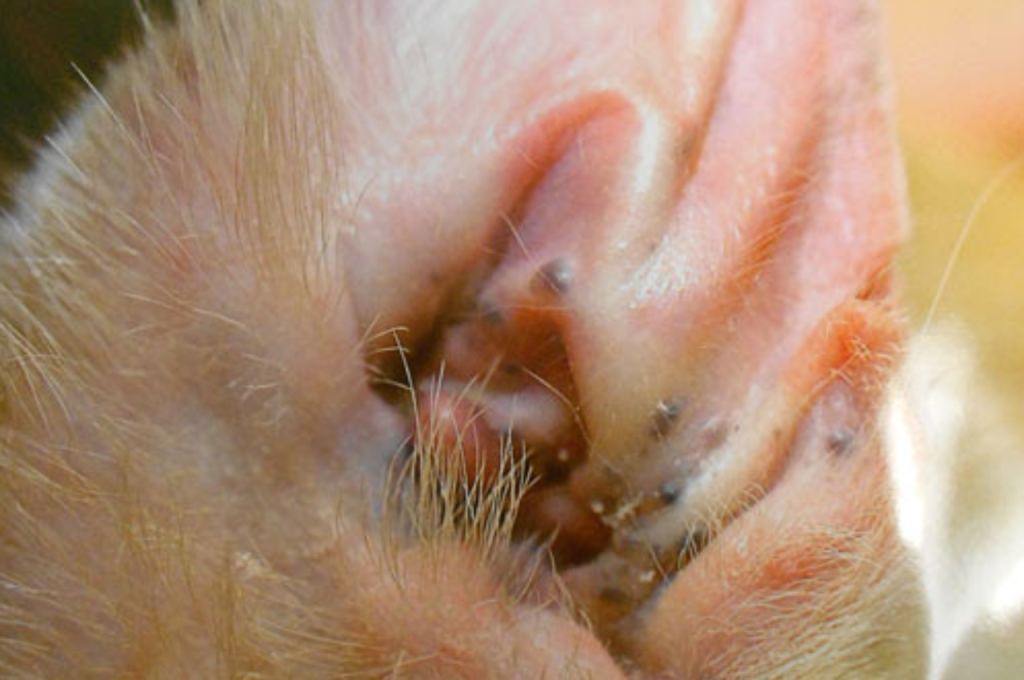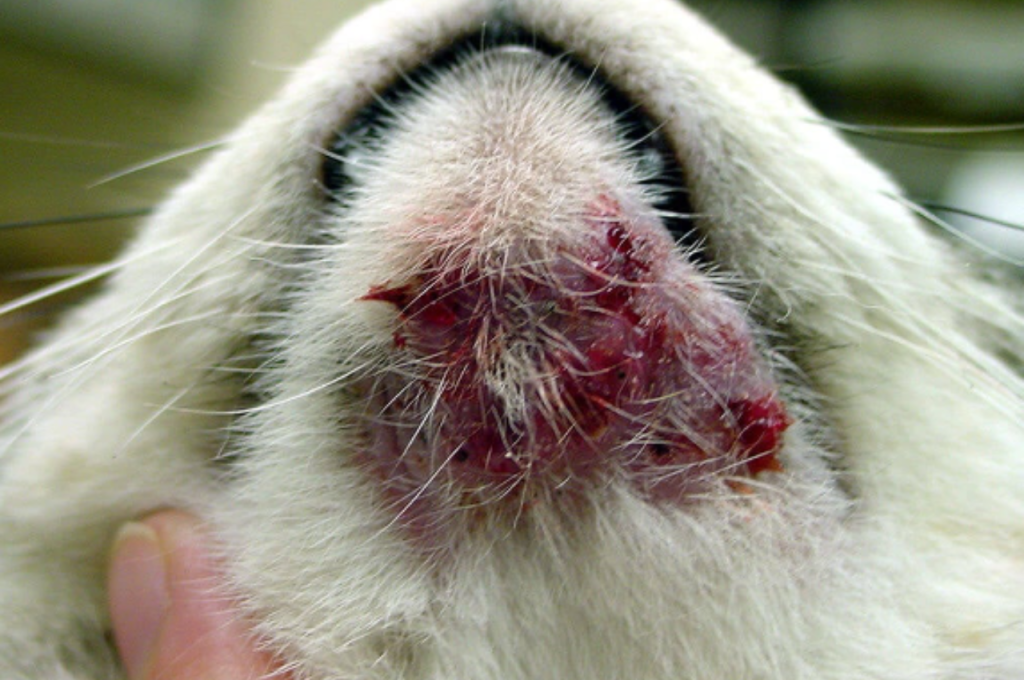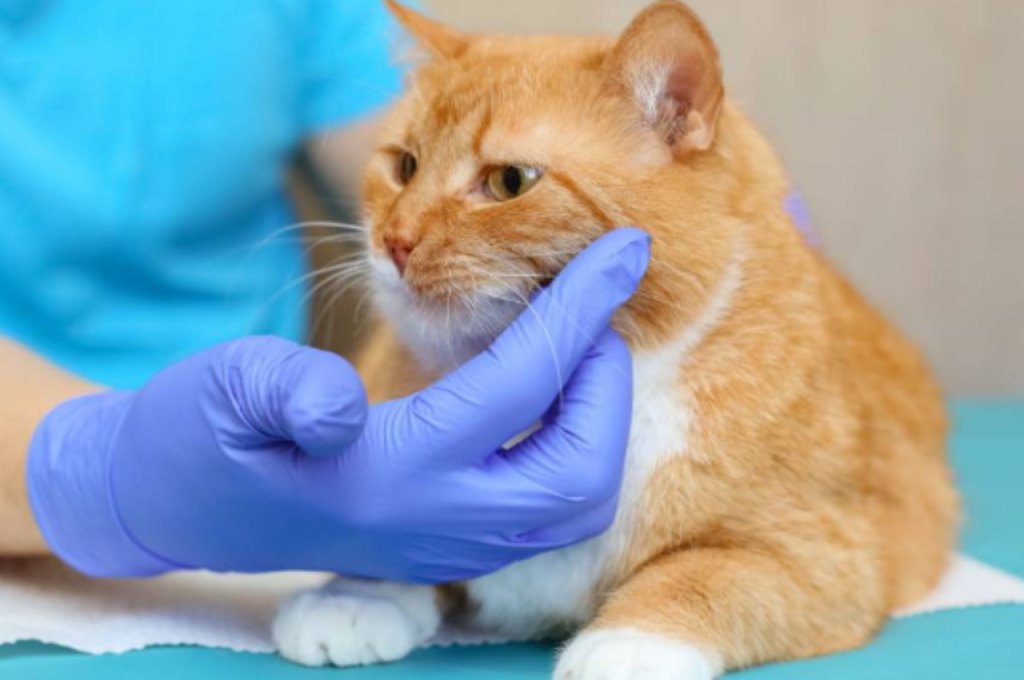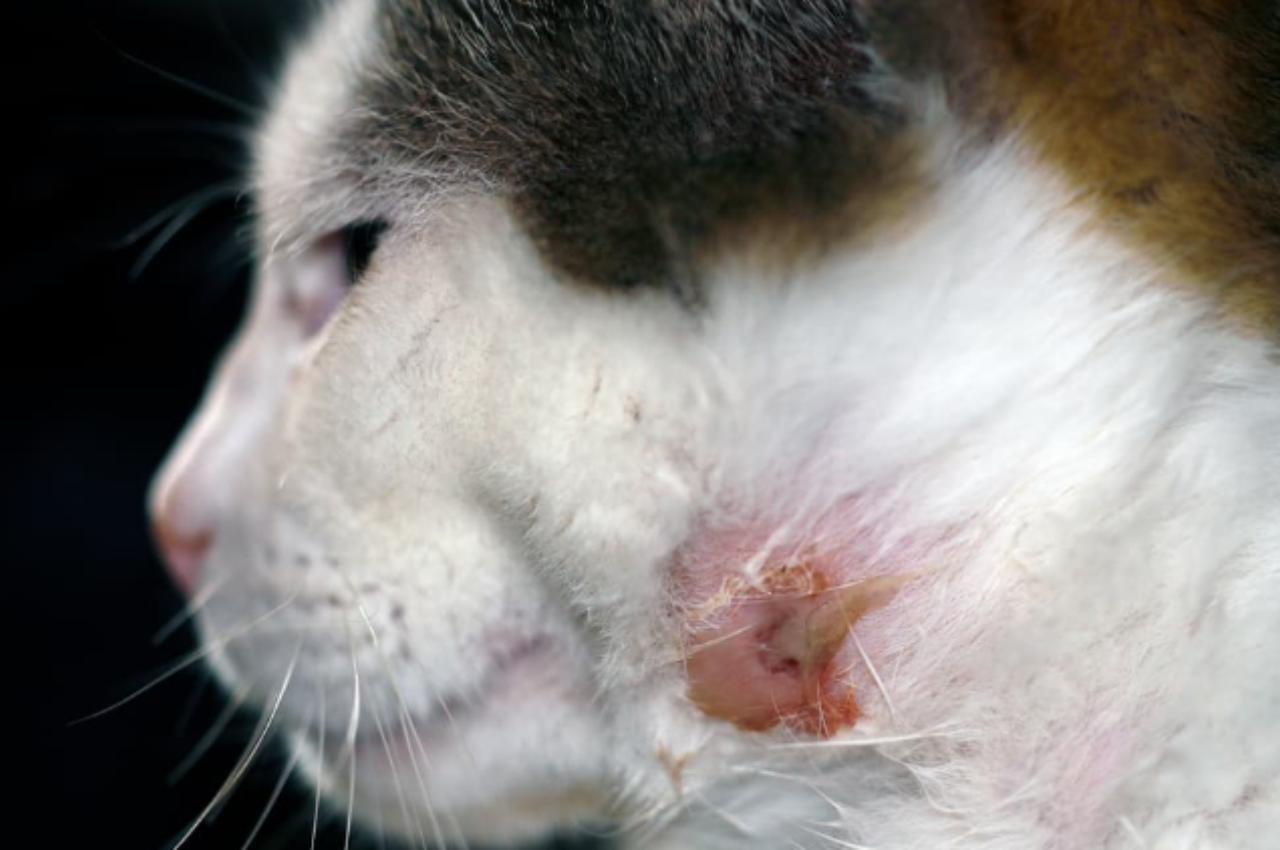To treat a cyst on a cat at home, clean the area gently with warm water and apply a warm compress. Monitor for changes and consult a vet if needed.
Cats, like humans, can develop cysts that may require attention. While professional veterinary care is always recommended, there are some steps you can take at home to help alleviate discomfort or promote healing. By following proper care techniques, you can potentially manage the cyst and provide relief for your furry friend.
We will explore the causes of cysts in cats, signs to look out for, and safe ways to address them at home. Let’s delve into how you can treat a cyst on your cat in a safe and effective manner, ensuring their health and well-being.
Introduction To Feline Cysts
Discovering a cyst on your cat can be concerning, but there are ways to treat it at home. Gently clean the area with warm water and apply a warm compress to help reduce inflammation. Consult your vet for proper guidance on care and treatment options.

Cysts are common in cats and can develop anywhere on their body. They are fluid-filled sacs that can be caused due to various reasons such as infections, allergies, tumors, or trauma. These cysts are usually harmless, but they can be painful and uncomfortable for your cat. In this blog post, we will discuss how to treat a cyst on a cat at home. We will cover the types of cysts in cats, how to identify a cyst at home, and some home remedies to treat them.
Types Of Cysts In Cats
Cysts in cats can be of different types, depending on the cause and location. Some common types of cysts in cats include:
- Sebaceous cysts
- Epidermoid cysts
- When cysts
- Umbilical cysts
- Dermoid cysts
- Pilonidal cysts
Identifying A Cyst At Home
Identifying a cyst on your cat at home is not difficult. The cysts are usually small, and round, and can be felt under the skin. They are often soft to the touch and can move around when you touch them. Some cysts may also be red, inflamed, or have a discharge. However, it is important to note that not all lumps and bumps on your cat’s skin are cysts. If you are unsure, it is always best to consult with your veterinarian. When you notice a cyst on your cat, it is important to keep an eye on it. Monitor its size, shape, and any changes in color or texture. If the cyst grows rapidly, becomes painful, or starts to bleed, it is time to take your cat to the vet.
In conclusion, cysts are common in cats and can be treated at home. However, if you are unsure about the type of cyst or how to treat it, it is best to consult with your veterinarian. Remember to monitor your cat’s cyst regularly and seek medical attention if necessary.
Initial Steps Before Treatment
Before beginning the treatment of a cyst on your cat at home, it is crucial to take some initial steps to ensure the safety and well-being of your pet. Here are the essential steps to follow before initiating any treatment:
Assessing The Cyst
Start by carefully examining the cyst on your cat. Look for any signs of inflammation, discharge, or changes in size. Take note of any discomfort your cat may be experiencing, such as excessive licking or scratching around the affected area.
When To Consult A Vet
If the cyst appears to be infected, is causing your cat significant discomfort, or has grown in size rapidly, it is advisable to consult a veterinarian immediately. Professional medical attention may be necessary to prevent any complications and ensure the proper treatment of the cyst.
Preparing For At-home Treatment
Gathering Necessary Supplies
Gather the following supplies to prepare for treating a cyst on your cat at home:
- Clean towels or cloths
- Antiseptic solution
- Sterile gauze pads
- Hydrogen peroxide
- Saline solution
- Medical gloves
- Elizabethan collar (cone collar)
Creating A Calm Environment
Ensure that the area where you will be treating your cat is quiet and free from distractions. Use a soft blanket or towel to create a comfortable and secure space for your cat. Dim the lights to create a soothing atmosphere.
Safe Cleaning Techniques
Caring for your beloved cat includes taking care of any cysts that may develop. When it comes to treating a cyst on your cat at home, safe cleaning techniques are essential to prevent infection and promote healing. In this article, we will guide you through the proper steps for sterilizing the area and using gentle cleaning methods to ensure your cat’s comfort and well-being.
Sterilizing The Area
Before you begin cleaning the cyst, it is crucial to sterilize the surrounding area to minimize the risk of infection. Follow these steps to ensure a sterile environment:
- Wash your hands thoroughly with warm water and antibacterial soap.
- Put on disposable gloves to prevent the transfer of bacteria.
- Clean a small area around the cyst using an antiseptic solution or diluted hydrogen peroxide.
- Use sterile gauze or cotton pads to gently pat the area dry.
Gentle Cleaning Methods
Once the area is sterilized, it’s time to clean the cyst itself. Here are some gentle cleaning methods to ensure your cat’s comfort:

- Warm Water Soaks: Prepare a warm water solution by mixing a teaspoon of salt in a cup of lukewarm water. Soak a clean cloth or gauze in the solution and gently place it on the cyst for a few minutes. This can help soften the cyst and reduce any discomfort.
- Mild Antiseptic Solutions: If recommended by your veterinarian, you can use a mild antiseptic solution such as chlorhexidine or povidone-iodine. Dilute the solution according to the instructions provided and use a sterile cotton pad or swab to apply it directly to the cyst.
- Avoid Harsh Chemicals: It is important to avoid using harsh chemicals, such as alcohol or hydrogen peroxide, directly on the cyst as they can cause further irritation or damage to the skin.
Remember, always consult your veterinarian before attempting to treat a cyst on your cat at home. They can provide specific guidance based on your cat’s individual needs and ensure the most appropriate treatment plan is followed.
Applying Natural Remedies
When it comes to treating a cyst on your cat at home, natural remedies can be gentle and effective. Here are some natural treatments that can help alleviate discomfort and promote healing for your feline friend.
Warm Compress Application
Applying a warm compress can help to reduce inflammation and promote drainage of the cyst. Use a clean cloth soaked in warm water, and gently press it against the cyst for 5-10 minutes, 2-3 times a day.
Herbal Treatments
Herbal treatments can offer soothing and healing properties for your cat’s cyst. Aloe vera gel, known for its anti-inflammatory and antimicrobial properties, can be applied topically to the cyst. Chamomile tea, when cooled, can also be used as a gentle compress to promote healing.
Monitoring And Aftercare
When it comes to treating a cyst on your cat at home, monitoring and aftercare are crucial steps to ensure proper healing and prevent complications.
Observing For Changes
- Check the cyst daily for any redness, swelling, or discharge.
- Monitor your cat’s behavior for signs of discomfort or pain.
- Record any changes in size or appearance of the cyst.
Preventing Infections
- Keep the cyst clean and dry to prevent bacteria growth.
- Avoid squeezing or popping the cyst to prevent infections.
- Consult with a veterinarian if you notice any signs of infection.
When To Seek Professional Help
If home remedies don’t improve the cat’s cyst, seek professional veterinary care.

Signs Of Complications
- A sudden increase in the size of the cyst
- Redness or swelling around the cyst
- Discharge of pus
Benefits Of Veterinary Care
- Accurate diagnosis of cyst
- Appropriate treatment plan
- Prevention of further complications
Preventive Measures
Regular Check-ups
- Regular veterinary check-ups are essential for early detection.
- Cats should have yearly wellness exams by a veterinarian.
Maintaining A Healthy Lifestyle
- Feed your cat a balanced diet to support immune function.
- Ensure access to fresh water at all times for hydration.
- Provide regular exercise to prevent obesity and promote overall health.
Conclusion
Treating a cyst on your cat at home requires careful attention and a gentle approach. By following the steps outlined in this blog post, you can provide relief and support to your feline companion. Remember to consult with your veterinarian for a proper diagnosis and guidance, as they are the experts in ensuring your cat’s well-being.
By taking proactive measures, you can help your cat recover and maintain their overall health.
